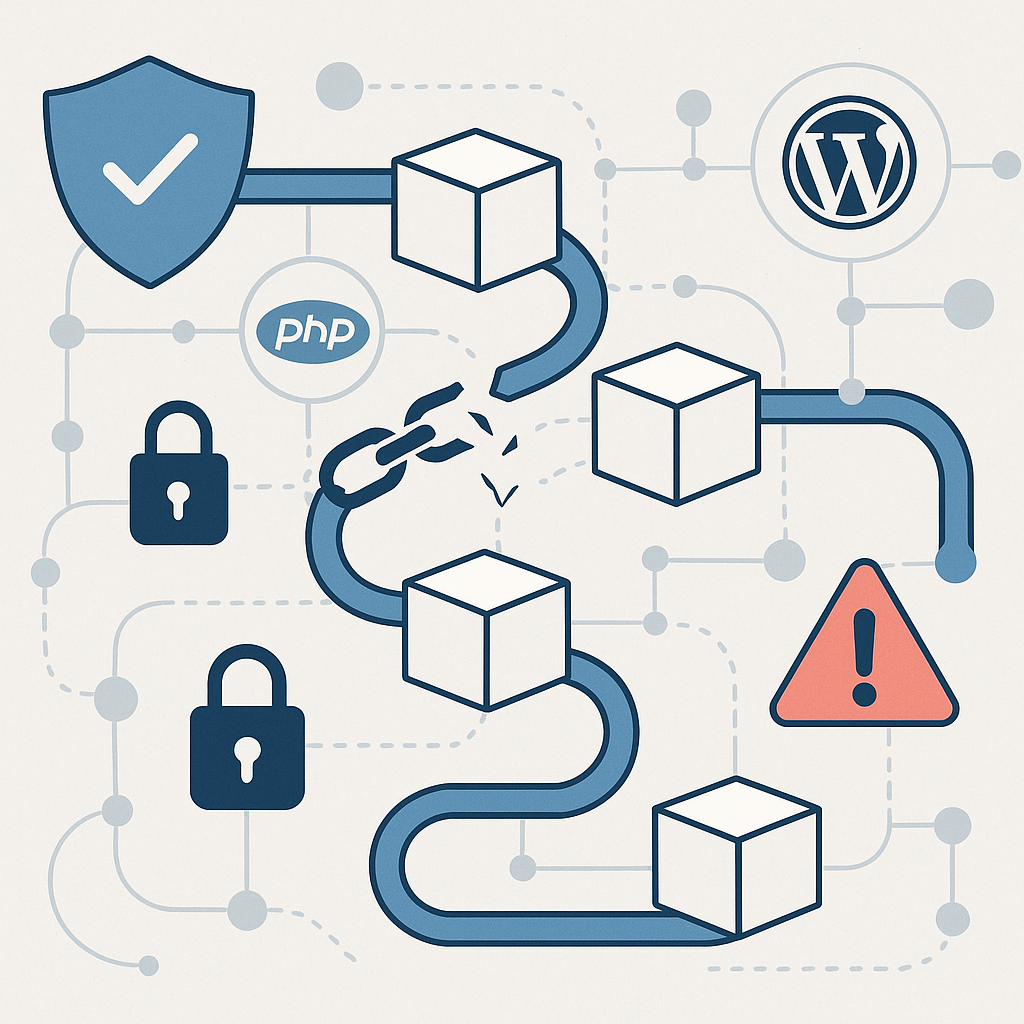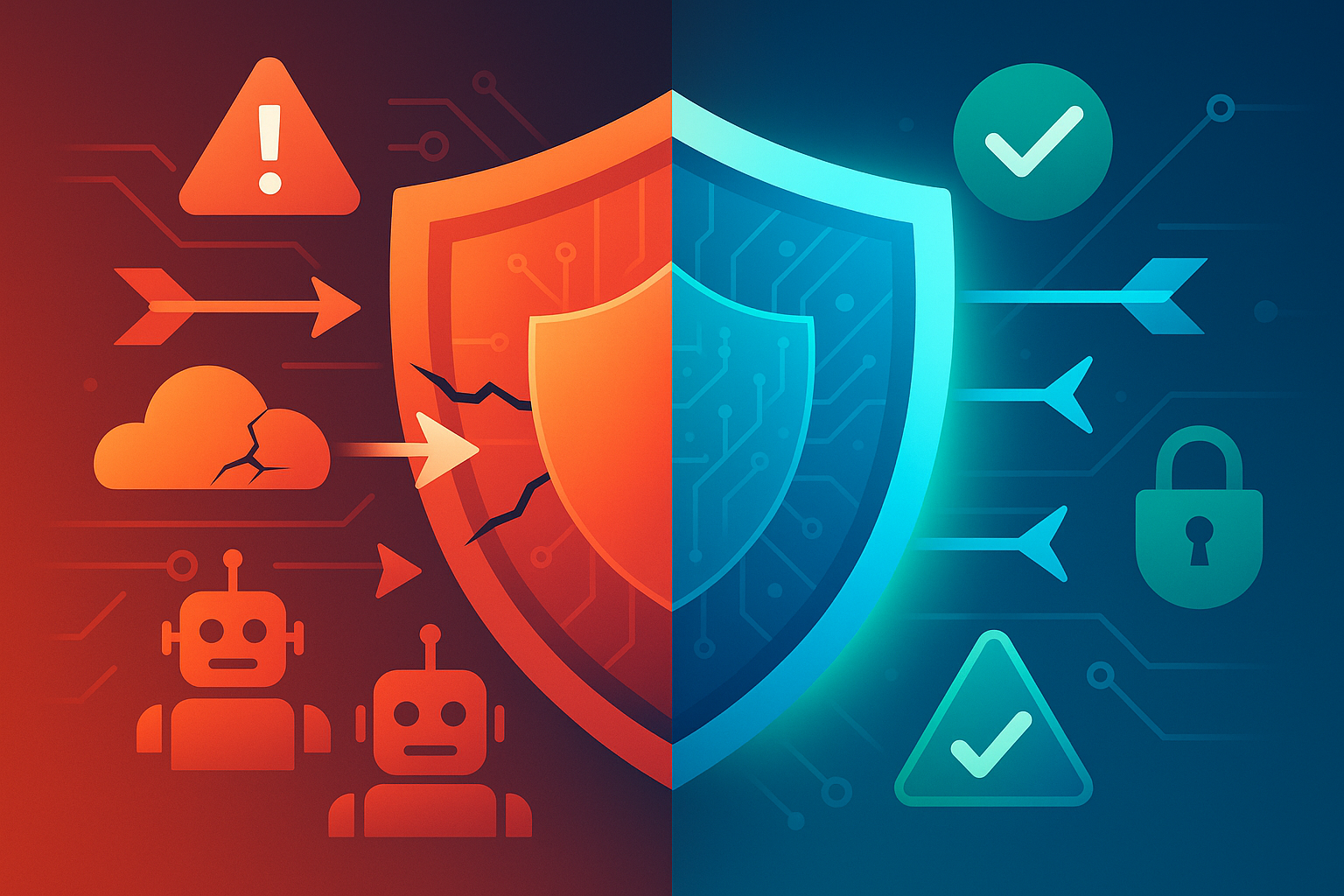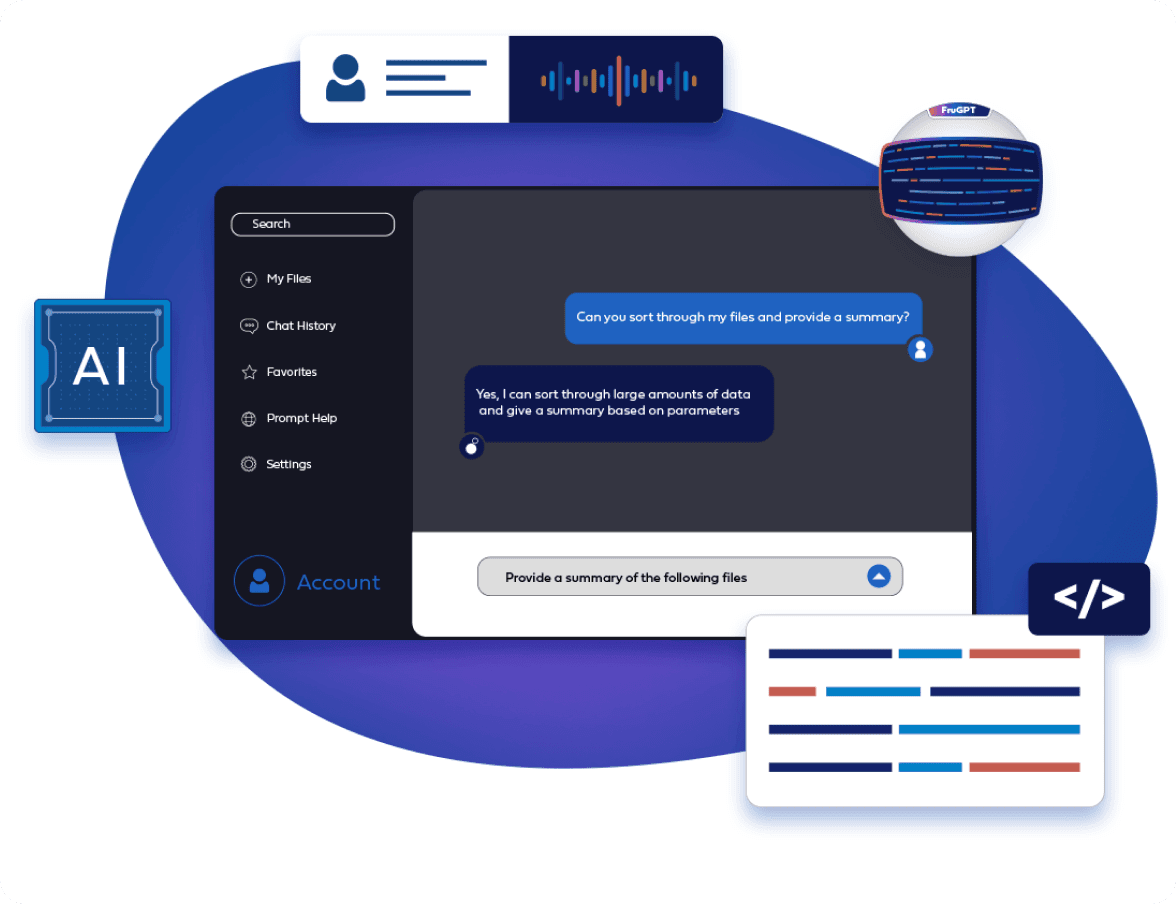Understanding the Gravity Forms Security Incident: Lessons in Supply Chain Security

Understanding the Gravity Forms Security Incident: Lessons in Supply Chain Security
Introduction
On July 10, 2025, a security issue affecting WordPress highlighted some of the ongoing challenges in software development. Gravity Forms, one of the most popular WordPress plugins with millions of installations worldwide, experienced a supply chain security incident. While the incident was contained to a limited window and specific distribution channels, it provides valuable insights into supply chain security that extend beyond WordPress to all modern software development.
Understanding Software Packages and the Supply Chain
Before diving into the specifics of the Gravity Forms incident, it’s crucial to understand what we mean by “packages” and “supply chain” in the context of software development.
What Are Software Packages?
When you install a WordPress plugin like Gravity Forms, WooCommerce, or Yoast SEO, you’re not just getting one piece of software. Modern plugins are sophisticated applications built using dozens or even hundreds of smaller components called packages (also known as libraries, modules, or dependencies). These packages are pre-written code components that provide specific functionality – PHP libraries for database operations, JavaScript packages for user interfaces, CSS frameworks for styling, and countless other specialized tools.
Think of a WordPress plugin like a car assembled from many parts. Just as a car manufacturer sources tires, engines, and electronics from various suppliers, plugin developers build their products using packages created by other developers. A single plugin might include PHP packages installed via Composer, JavaScript libraries from npm, and various other third-party dependencies. Each of these represents a link in the supply chain.
This same pattern exists across all modern software development. JavaScript applications rely on npm packages like React, Express, or Lodash. Python developers leverage packages like Django, NumPy, or Requests. Ruby developers depend on gems like Rails, Devise, or Sidekiq. The key insight is that whether it’s a WordPress plugin or any other application, modern software is built by assembling these pre-existing components.
This approach has revolutionized software development by saving countless hours of development time and allowing developers to focus on their unique business logic rather than reinventing common functionality. However, this efficiency comes with an important security consideration: when you install a WordPress plugin, you’re trusting not just the plugin developer, but also all the package authors whose code is bundled within. Each package represents a potential entry point into your application’s security perimeter, creating what’s known as a supply chain risk.
Why It’s Called a “Supply Chain”
The term “supply chain” is borrowed from manufacturing, where products are assembled from components sourced from various suppliers. In software, the analogy is strikingly similar:
Traditional Manufacturing:
Raw Materials → Component Suppliers → Assembly → Distribution → End Consumer
Software Development:
Code Libraries → Package Repositories → Developer Integration → Deployment → End UserJust as a car manufacturer depends on tire suppliers, brake manufacturers, and electronics providers, modern software depends on a vast network of package maintainers and repositories.
The Software Supply Chain Flow
Here’s how the modern software supply chain typically works:
┌─────────────────┐ ┌──────────────────┐ ┌──────────────────┐ ┌─────────────────┐
│ Package Creator │ --> │ Package Registry │ --> │ Developer │ --> │ Production │
│ (Maintainer) │ │ (npm, PyPI, │ │ (Integration) │ │ Deployment │
└─────────────────┘ │ WordPress.org) │ └──────────────────┘ └─────────────────┘
| └──────────────────┘ | |
v | v v
┌─────────────────┐ v ┌──────────────────┐ ┌─────────────────┐
│ Code Review │ ┌──────────────────┐ │ Build/Test │ │ Runtime │
│ & Testing │ │ Registry Security │ │ CI/CD Scans │ │ Monitoring │
└─────────────────┘ │ Scanning │ └──────────────────┘ └─────────────────┘
└──────────────────┘Security Scanning Throughout the Supply Chain
Modern security practices involve multiple checkpoints throughout the supply chain:
Supply Chain Security Scanning Layers:
1. Source Level
├── Static Code Analysis
├── Dependency Vulnerability Scanning
└── License Compliance Checks
2. Registry Level
├── Malware Detection
├── Known Vulnerability Database Checks
└── Behavioral Analysis
3. Integration Level
├── Software Composition Analysis (SCA)
├── Container Scanning
└── Infrastructure as Code (IaC) Scanning
4. Deployment Level
├── Runtime Application Self-Protection (RASP)
├── Network Traffic Analysis
└── Anomaly Detection
5. Continuous Monitoring
├── Real-time Threat Intelligence
├── Automated Patch Management
└── Incident Response AutomationThe Trust Problem
The fundamental challenge with supply chain security is trust. When you install a package, you’re placing trust in multiple layers of the software ecosystem. You trust the original developer’s intentions and competence, believing they’ve written secure, well-intentioned code. You also trust the security of their development environment, hoping their systems haven’t been compromised. Beyond that, you trust the integrity of the package repository where the code is hosted and the security of the distribution mechanism that delivers it to you.
Perhaps most challenging is the trust you must place in all transitive dependencies – the dependencies of your dependencies. A single WordPress plugin might rely on several JavaScript libraries, which in turn depend on other packages, creating a complex web of trust relationships. This interconnected nature creates what security experts call an expanded “attack surface” – multiple points where malicious actors can potentially inject harmful code into your application.
The Gravity Forms Incident: What Happened
For approximately 48 hours, threat actors successfully compromised specific versions of Gravity Forms (2.9.11.1 and 2.9.12) distributed through manual downloads and Composer installations. The sophistication of the attack revealed deep understanding of enterprise deployment practices. The malicious code wasn’t a simple backdoor – it was a carefully crafted payload that blocked legitimate updates to maintain persistence while establishing communication channels with external command-and-control servers. The attackers went further, creating backdoor administrative accounts and enabling remote code execution capabilities that could give them complete control over affected sites.
What makes this incident particularly noteworthy is its surgical precision. Rather than attempting a broad compromise of the automatic update system or API infrastructure, the attackers specifically targeted manual download packages. This strategic choice demonstrates their understanding that many enterprise deployments rely on controlled, manual update processes – often considered more secure due to the additional oversight they provide. This targeting of “secure” practices highlights how supply chain attacks can turn security measures into vulnerabilities.
The Growing Focus on Supply Chain Security
The Gravity Forms incident joins a series of notable supply chain security events that have shaped industry practices:
SolarWinds (2020): Perhaps the most notorious example, where malicious code inserted into SolarWinds’ Orion platform affected over 18,000 organizations, including major government agencies and Fortune 500 companies. The attack, attributed to Russian state actors, went undetected for months and demonstrated the devastating potential of supply chain compromises.
Codecov (2021): Attackers modified a bash script used in Codecov’s CI/CD pipeline, potentially exposing sensitive credentials and tokens for thousands of organizations. The breach lasted from January 31 to April 1, 2021, highlighting how CI/CD pipelines themselves can become attack vectors.
npm Event-Stream (2018): A popular npm package with millions of weekly downloads was hijacked to steal cryptocurrency wallet credentials, demonstrating how even small, seemingly innocuous packages can become attack vectors. The malicious code was hidden in a dependency of a dependency, showing the risks of transitive dependencies.
Kaseya VSA (2021): Ransomware operators compromised this IT management software to deploy malware to hundreds of businesses through their managed service providers. The REvil ransomware group exploited zero-day vulnerabilities to launch one of the largest ransomware attacks in history.
The Evolution of Security Challenges
The increase in supply chain attacks represents an evolution in security challenges. As organizations have strengthened their direct defenses, threat actors have adapted their approaches, seeking different vectors for compromise.
The Hardening of the Edge
Modern web applications have become significantly more difficult to attack directly. Today’s security landscape features advanced Web Application Firewalls (WAFs) that use machine learning to detect and block malicious traffic patterns in real-time. Global Content Delivery Networks (CDNs) provide robust DDoS protection and geographical distribution that makes direct attacks less effective than ever before.
Organizations have also embraced automated security scanning that catches common vulnerabilities before they can be exploited, while proper implementation of security headers and policies like CORS and CSP significantly reduce available attack vectors. The widespread adoption of multi-factor authentication has made credential-based attacks much harder to execute successfully. Perhaps most importantly, the shift toward zero trust architecture means modern networks assume no trust by default, dramatically limiting opportunities for lateral movement even if an attacker gains initial access.
These improvements represent years of collective learning and billions of dollars in security investments. Yet as we’ve strengthened these traditional defenses, we’ve inadvertently created incentives for attackers to seek alternative approaches.
Understanding the Supply Chain Security Landscape
The security landscape has evolved to where supply chain vulnerabilities present unique challenges:
Traditional Security Model: Supply Chain Security Model:
Single Point → Defense → Protection Multiple Points → Layered Defense → Comprehensive Protection
Focus: Direct attacks Focus: Indirect vectors
Approach: Perimeter defense Approach: Zero trust architecture
Visibility: High Visibility: Requires enhanced monitoring
Control: Direct Control: Shared responsibilityThis evolution requires organizations to adapt their security strategies, implementing comprehensive approaches that address both direct and indirect security vectors.
Understanding Supply Chain Security Challenges
Supply chain attacks present unique challenges that require thoughtful solutions. At their core, these attacks exploit the complex trust relationships between software vendors and their users – relationships that form the foundation of modern software development. When developers install a package, they’re not just adding code to their project; they’re establishing a trust relationship that extends through their entire application lifecycle.
The multiplier effect of supply chain attacks makes them particularly attractive to threat actors. A single compromised component can impact thousands or even millions of downstream users, providing unprecedented reach from a single point of compromise. This scalability transforms the economics of cybercrime, making it worthwhile for attackers to invest significant resources in compromising upstream components.
Detection complexity adds another layer of challenge. Traditional security tools excel at identifying threats from external sources, but struggle when malicious code comes from typically trusted sources. This requires organizations to implement advanced monitoring solutions that can identify behavioral anomalies rather than relying solely on signature-based detection. Meanwhile, the frequency of updates in modern software development creates a constant tension between maintaining security through timely patches and ensuring stability through careful testing – a balance that becomes even more delicate when supply chain risks are considered.
The Universal Nature of Package Dependencies
The reality of modern software development is that every application, regardless of platform or technology stack, relies on a complex web of dependencies. A typical WordPress site might use 20-30 plugins, but beneath the surface, each of these plugins brings its own set of dependencies, creating a dependency tree that can easily include hundreds of components. Modern React applications take this even further, often incorporating thousands of npm packages in their dependency tree – a number that would shock developers from just a decade ago.
Drupal sites face similar challenges, leveraging contributed modules that themselves depend on external libraries, while even supposedly “simple” static sites often rely on build tools with extensive dependency chains. This interconnectedness isn’t a flaw in modern development practices – it’s a feature that enables rapid innovation and prevents constant reinvention of the wheel. However, it does mean that every organization, from small businesses to large enterprises, must consider supply chain security as a fundamental aspect of their technology strategy.
Defending Against Supply Chain Attacks: A Multi-Layered Approach
At Fruition, we’ve implemented a comprehensive defense strategy that recognizes supply chain security requires more than just traditional security measures. Our approach begins with automated scanning at multiple levels. We utilize Docker Hub scanning for container vulnerabilities, GitHub Advanced Security for code and dependency analysis, and continuous monitoring of package updates and changes. This automated foundation provides round-the-clock vigilance against known vulnerabilities and suspicious changes in our dependency chains.
Network monitoring forms our second line of defense. By analyzing outbound traffic patterns, we can detect when applications attempt to communicate with suspicious domains – often the first sign of a supply chain compromise. Our behavioral analysis systems identify unusual patterns that might indicate compromised code attempting to establish persistence or exfiltrate data. Real-time alerting ensures our security team can respond immediately to potential threats, minimizing the window of exposure.
Our controlled update processes balance the need for timely security patches with the stability our clients demand. Every update passes through staging environment testing before reaching production, with automated rollback capabilities ready to reverse any problematic changes. We use version pinning and lock files to ensure reproducible builds, creating an audit trail that helps us quickly identify when and how compromises might have entered our systems. This systematic approach has proven invaluable during incidents like the Gravity Forms compromise, allowing us to quickly assess exposure and take appropriate action.
Finally, our incident response planning ensures we’re prepared for the inevitable. Despite best efforts, supply chain compromises will occur, and preparation makes the difference between a minor incident and a major breach. Our plans include rapid detection and containment procedures, clear communication channels with clients, and regular security drills that keep our team sharp and ready to respond.
Lessons from the Gravity Forms Incident
The Gravity Forms team’s response to their security incident offers valuable lessons for the broader technology community. Their rapid detection and transparent disclosure set a gold standard for incident response. Rather than attempting to minimize or hide the issue, they quickly communicated with their user base, providing detailed information that allowed administrators to assess their exposure and take appropriate action.
Their precise identification of affected versions and distribution methods demonstrated the importance of comprehensive logging and version control. By clearly defining the scope of the compromise – specific version numbers and distribution channels – they enabled targeted response efforts rather than panic-driven wholesale replacements. The team also provided actionable remediation steps with specific instructions for detection and cleanup, transforming a potentially chaotic situation into a manageable incident response process.
Perhaps most importantly, the Gravity Forms team immediately implemented systemic improvements, rotating credentials and enhancing security measures to prevent similar incidents. This forward-looking approach, focusing on prevention rather than just remediation, exemplifies the continuous improvement mindset necessary for effective supply chain security.
Building Stronger Supply Chain Security
Supply chain security has evolved from a technical consideration to a strategic business priority that requires organization-wide commitment. Leading organizations are implementing comprehensive Software Bill of Materials (SBOM) tracking, creating detailed inventories of every component in their technology stack. This visibility proves invaluable during incidents, allowing rapid assessment of exposure when vulnerabilities are discovered.
Investment in automated security scanning throughout the development lifecycle has become essential. Modern organizations scan code at commit time, during build processes, and continuously in production, creating multiple opportunities to catch compromised dependencies before they cause damage. Vendor security assessment processes have also matured, with organizations requiring detailed security documentation and conducting regular audits of critical suppliers.
Creating incident response plans specifically for supply chain compromises represents another crucial step. These specialized plans account for the unique challenges of supply chain incidents, including the need to coordinate with external vendors and communicate with customers who may be indirectly affected. Most importantly, successful organizations foster a security-conscious culture that encourages questioning and verification rather than blind trust. This cultural shift, more than any technical measure, provides the foundation for effective supply chain security.
Moving Forward with Confidence
The Gravity Forms incident reinforces the importance of comprehensive security strategies in our interconnected digital ecosystem. By implementing strong security practices, organizations can effectively manage supply chain risks while continuing to leverage the innovation and efficiency that modern software development provides.
At Fruition, we’re passionate about helping our clients build resilient digital infrastructures through continuous monitoring, proactive security measures, and strategic technology partnerships. Managing supply chain security is an ongoing process, and with the right tools, processes, and collaborative approach, organizations can thrive in today’s digital landscape.
Ready to strengthen your WordPress security and implement comprehensive supply chain protection? Start a project with us today and discover how our Service Desk team can help your business thrive with confidence in your digital security.




